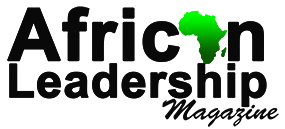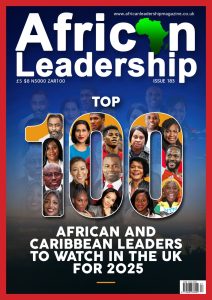In the face of global fashion, Africa is weaving a narrative that is both rich and revolutionary. The continent, long regarded as a reservoir of cultural heritage, is increasingly asserting itself as a major player in the fashion industry. But beyond its aesthetic appeal lies an economic powerhouse with the potential to transform into a $50 billion industry. The question remains: can African fashion, with its deep-rooted history and innovative sustainability practices, scale up to such an economic milestone?
In 2025, the global fashion market is expected to be worth $1.84 trillion, accounting for 1.63% of the world’s GDP. The industry is projected to expand at a 4.1% compound annual growth rate (CAGR) from 2024 to 2030. Out of the 3.62 billion people in the global workforce, 430 million are employed in fashion and textile production, making it one of the largest employment sectors worldwide. The typical U.S. household spends approximately $162 per month on clothing, contributing to a U.S. apparel industry valued at $365.7 billion in 2025, which is expected to grow at a CAGR of 2.11% from 2025 to 2028.
READ ALSO: Is Africa the New Fashion Capital of the World?
The global women’s apparel market is currently valued at $930 billion and is expected to surpass $1 trillion by 2027, while the men’s apparel market stands at $587.6 billion, and the children’s apparel segment is valued at $274.3 billion. Each year, the global fashion industry produces 100 billion garments, equating to 12.5 pieces of clothing per person worldwide. The average individual owns between 70 and 150 pieces of clothing, with Europeans having the largest wardrobes compared to other regions. Overall, the global apparel market is valued at $1.7 trillion, comprising approximately 2% of the world’s economy.
Despite its undeniable influence, the global fashion industry is also plagued by unsustainable practices. The sector is responsible for 10% of global carbon emissions—more than international flights and maritime shipping combined. The growing demand for sustainable alternatives presents an opportunity for emerging markets like Africa to capitalise on eco-conscious fashion trends.
Africa’s Place in the Global Fashion Economy
African fashion is experiencing an unprecedented boom. According to McKinsey & Company, the African fashion industry was valued at approximately $31 billion in 2020, with projections indicating it could surpass $50 billion by 2030 if investments and infrastructure development align with market demand. With a youthful population—over 60% of Africans are under 25—the appetite for fashion-driven entrepreneurship is expanding rapidly.
Nigeria, South Africa, Ghana, and Kenya are leading markets, contributing significantly to Africa’s fashion industry. Nigeria’s fashion industry alone contributes over $6.1 billion to the GDP, with Lagos Fashion Week attracting global investors and designers. South Africa, home to brands like Maxhosa by Laduma and Thebe Magugu, has witnessed a steady 10% annual growth in its fashion sector, fuelled by international partnerships and local consumption.
Meanwhile, e-commerce is driving African fashion’s expansion. Platforms like Jumia, Afrikrea, and Zando are providing African designers with global reach. In 2022, Afrikrea, a leading African e-commerce platform, reported a 60% increase in international sales, with buyers from the United States, France, and the UK showing significant interest in African-inspired designs.
Sustainability and Innovation: Africa’s Secret Weapon
While the rest of the world grapples with the environmental impact of fast fashion, Africa is pioneering innovative sustainability models. Upcycling, the use of organic materials, and traditional dyeing techniques position African fashion as a leader in the sustainable fashion movement. According to the UN Environment Programme, over 40% of Africa’s textile production involves some form of recycling or upcycling, compared to the global average of 25%.
Designers such as Nkwo Onwuka (Nigeria) and Kofi Ansah (Ghana) are leading the charge in eco-conscious fashion, utilising discarded fabric waste to create luxury garments. The innovative use of waste materials, such as turning plastic waste into fabric in Rwanda, has positioned African designers as torchbearers for sustainable fashion. With the global sustainable fashion market projected to reach $9.81 billion by 2025, Africa’s early adoption of eco-friendly practices could be a key differentiator in achieving the $50 billion target.
Challenges Hindering Growth
Despite its potential, African fashion faces significant hurdles. The lack of robust infrastructure, insufficient access to financing, and inadequate supply chains impede the industry’s scalability. A report by the African Development Bank (AfDB) revealed that 70% of African designers struggle with funding, while 60% cite poor logistics as a barrier to international expansion. Additionally, counterfeit goods and competition from Western fast fashion brands make it difficult for authentic African designs to penetrate global markets at scale.
Another major challenge is the need for industry regulation. Unlike Europe and North America, where fashion councils govern industry standards, Africa lacks a unified regulatory framework. Establishing regional fashion councils with standardised policies on intellectual property rights, trade regulations, and manufacturing standards could provide the stability necessary for sustainable growth.
The Road to a $50 Billion Industry
To achieve a $50 billion valuation, Africa’s fashion industry must embrace strategic investments, technological innovation, and market expansion. Governments must prioritise textile industry policies, much like Ethiopia has done with its Hawassa Industrial Park, which has attracted major global investors such as PVH Corp (owners of Tommy Hilfiger and Calvin Klein). Countries like Rwanda, which banned second-hand clothing imports to boost local production, present a model that could be replicated across the continent.
Moreover, collaborations with international brands could accelerate growth. The success of the 2021 collaboration between Nigerian designer Kenneth Ize and Karl Lagerfeld demonstrated the power of African-Western fashion partnerships. Encouraging more African designers to showcase at global fashion weeks and investing in digital marketing will be crucial in propelling African fashion to mainstream recognition.
A Cultural and Economic Revolution
African fashion is more than an industry; it is a movement. The world is beginning to embrace the continent’s unique blend of heritage and modernity, with celebrities like Beyoncé, Rihanna, and Lupita Nyong’o donning African-inspired designs on global platforms. If Africa can harness its creative ingenuity, resolve infrastructure deficits, and leverage its sustainable practices, the dream of a $50 billion industry is not far-fetched—it is inevitable.
In the grand runway of global fashion, Africa is not just walking; it is strutting towards an economic revolution. The industry is at an inflection point, and with the right investments, policy frameworks, and strategic alliances, Africa’s fashion industry can transcend its current trajectory and become a formidable global force. The question is no longer if Africa will reach the $50 billion mark; it is when.




